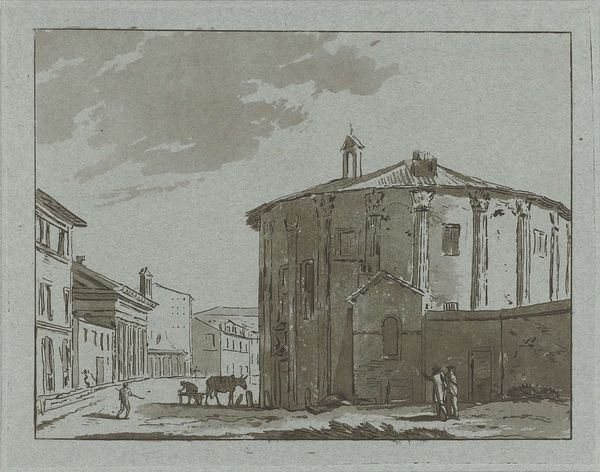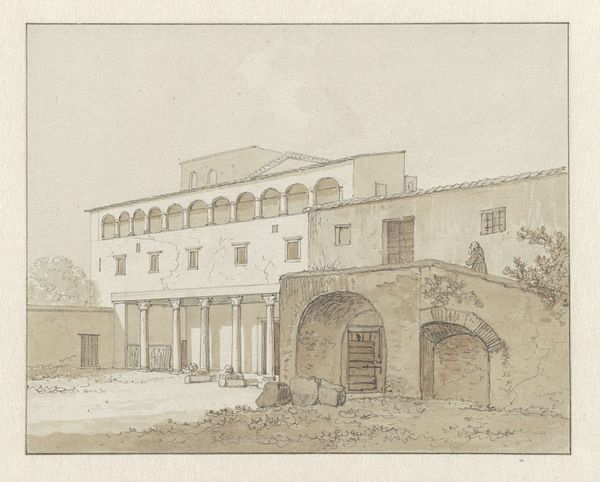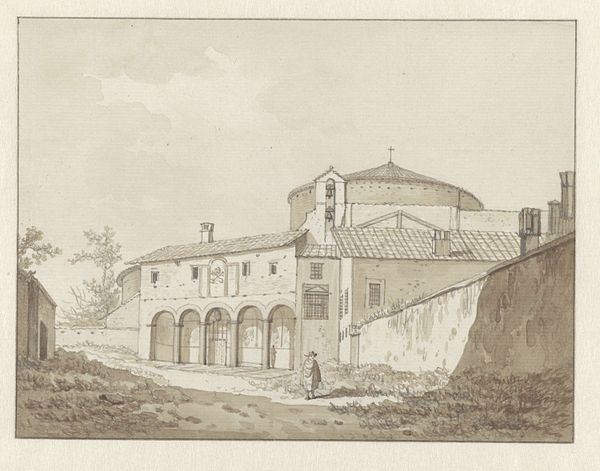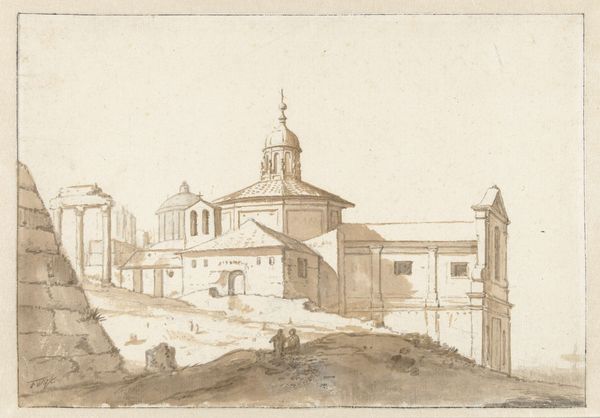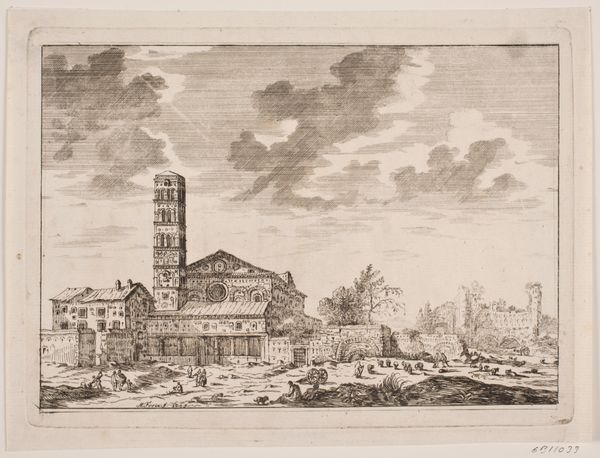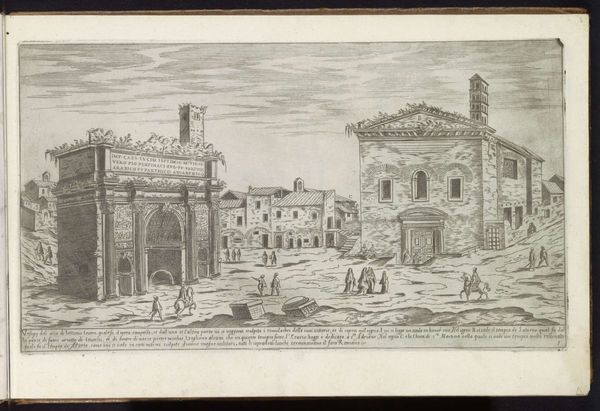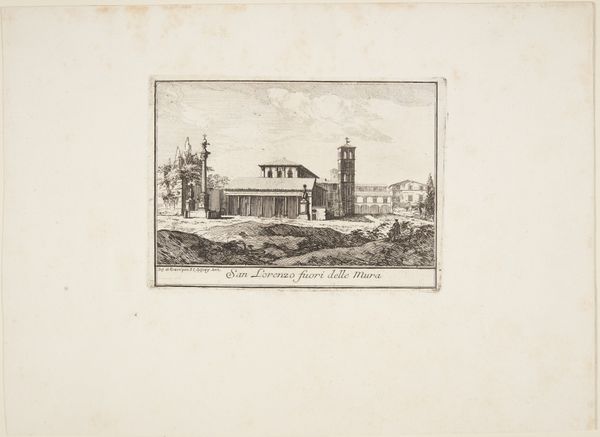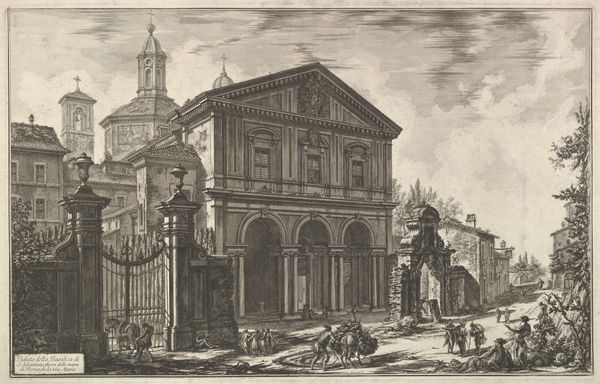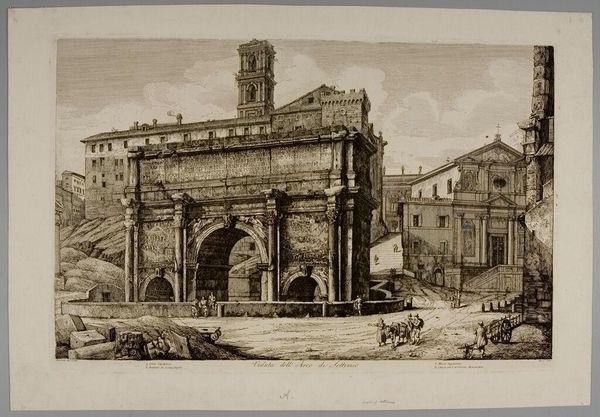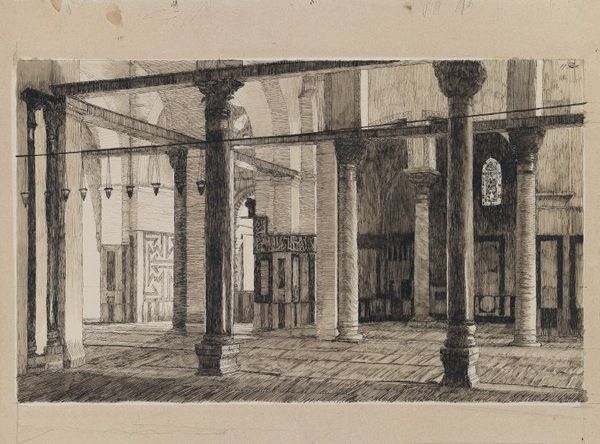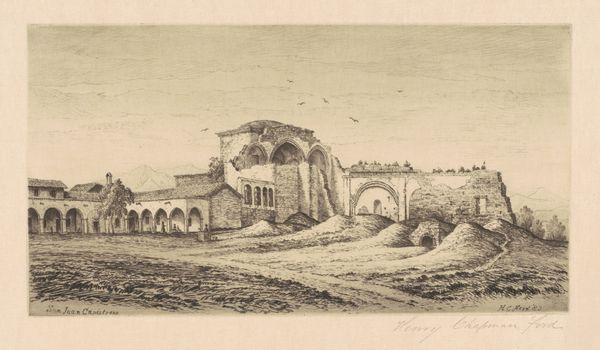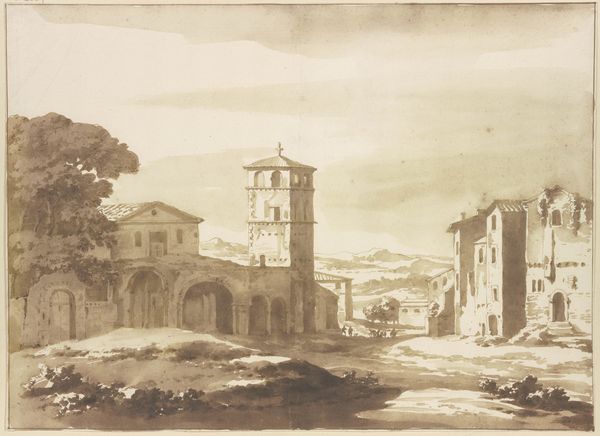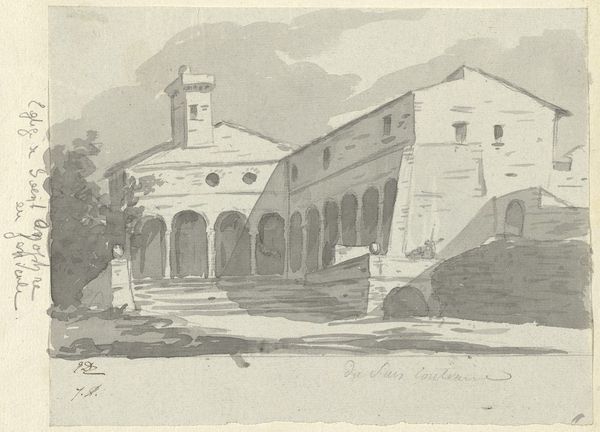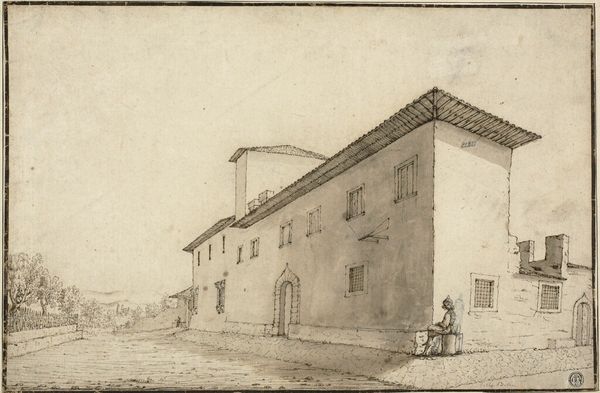
The Church of San Giorgio in Velabro , Rome, with the Arch of the Argentari and Tower of the Campidoglio to the left 1761 - 1817
0:00
0:00
drawing, paper, ink, architecture
#
drawing
#
neoclacissism
#
landscape
#
paper
#
ink
#
line
#
cityscape
#
architecture
#
realism
Dimensions: height 290 mm, width 377 mm
Copyright: Rijks Museum: Open Domain
Curator: This ink drawing on paper, likely created between 1761 and 1817 by Daniël Dupré, depicts The Church of San Giorgio in Velabro in Rome. Also included are the Arch of the Argentari and the Tower of the Campidoglio. Editor: It strikes me as quite serene. There’s an almost archaeological quality to the way the architectural details are rendered with such precision. The lone figures emphasize the grandeur and history embedded within the Roman cityscape. Curator: Precisely. Dupré, working during a period dominated by Neoclassicism, displays that movement’s fascination with classical forms and the desire to document and preserve these historical structures through careful observation. The church, with its portico, becomes an object of scholarly interest, almost like a relic being surveyed. Editor: Yes, the church is prominent. Note its symbolic centrality within the composition. Churches like San Giorgio often stood as visual and spiritual anchors amidst societal changes. And with the arch included, this might evoke triumphal arches of emperors, linking the church, as it were, to worldly dominion, reflecting spiritual continuity from ancient empires to papal Rome. Curator: I agree, the Arch of the Argentari speaks volumes. It stands partly obscured, hinting at the layering of history that Rome represents. The Campidoglio, with its seat of civic authority, appearing in the background emphasizes this intersection of ecclesiastical and secular power. Editor: And the details! That attention even extends to including smaller human figures—a traveler with a mule, for instance—which, intentionally or not, echoes depictions in Roman reliefs. The very lines of the ink sketch might convey echoes of forms and cultural meaning beyond the apparent scenery. Curator: I appreciate your bringing that forward, particularly in light of this work predating significant 19th-century urban renewal in Rome. Preserving images such as this ensured the transmission of information on sites and, therefore, control and influence for institutions invested in history and authority. Editor: This discussion makes me look at it now as more than just a rendering, as more like a careful visual artifact designed to impart a layered understanding of continuity and power, both civic and divine, within a historically resonant landscape. Curator: It’s these subtle interplays and records that make the study of works of art continually enriching; in their precision we reveal much about the cultural, historical frameworks that they express.
Comments
No comments
Be the first to comment and join the conversation on the ultimate creative platform.
